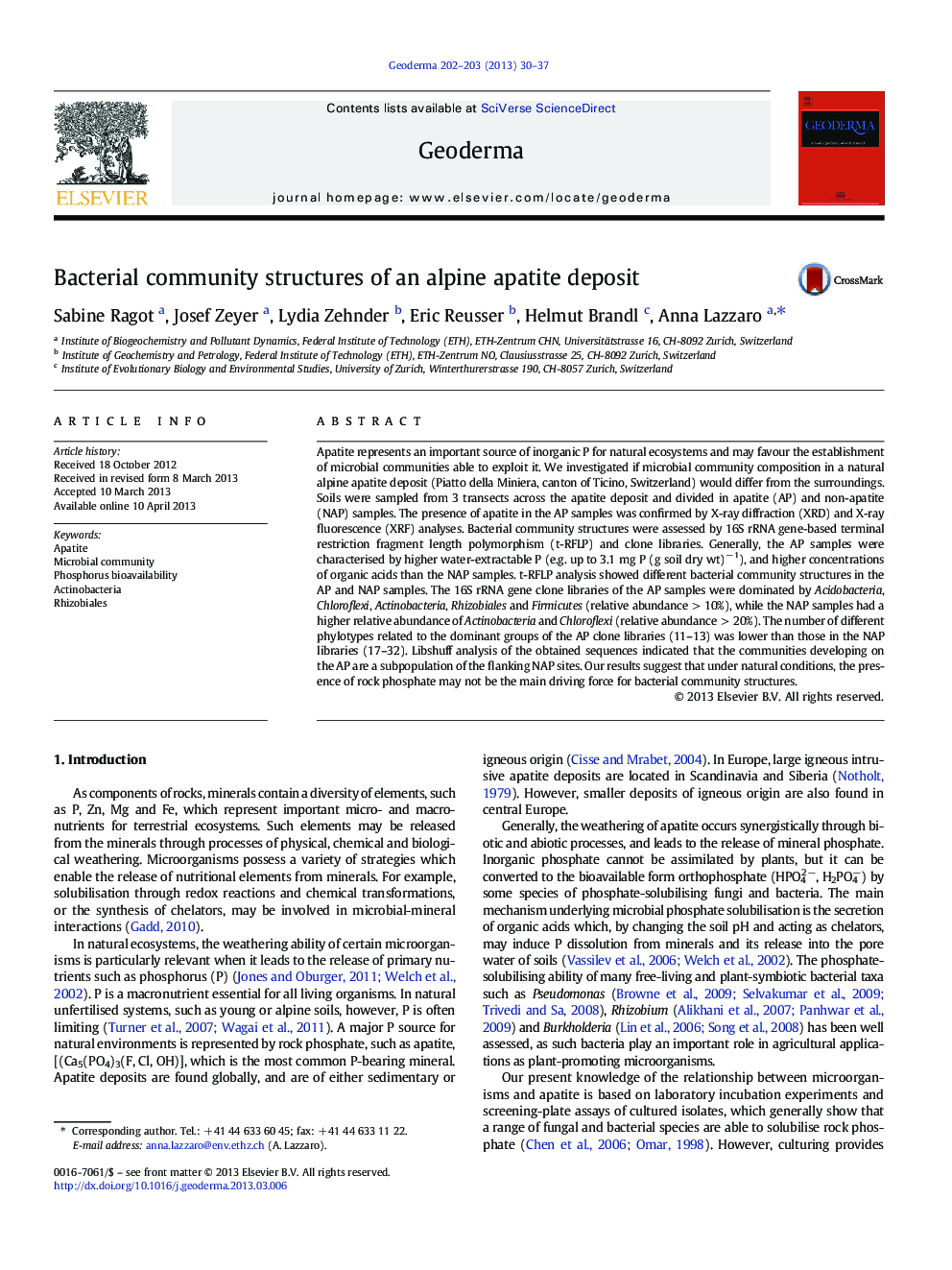| کد مقاله | کد نشریه | سال انتشار | مقاله انگلیسی | نسخه تمام متن |
|---|---|---|---|---|
| 4573488 | 1629485 | 2013 | 8 صفحه PDF | دانلود رایگان |

• We investigated bacterial community composition on a natural apatite deposit.
• The apatite deposit had higher extractable P than flanking sites.
• The apatite deposit had higher acetate, formate and lactate than flanking sites.
• Apatite harbored subpopulations of Actinobacteria and Rhizobiales.
Apatite represents an important source of inorganic P for natural ecosystems and may favour the establishment of microbial communities able to exploit it. We investigated if microbial community composition in a natural alpine apatite deposit (Piatto della Miniera, canton of Ticino, Switzerland) would differ from the surroundings. Soils were sampled from 3 transects across the apatite deposit and divided in apatite (AP) and non-apatite (NAP) samples. The presence of apatite in the AP samples was confirmed by X-ray diffraction (XRD) and X-ray fluorescence (XRF) analyses. Bacterial community structures were assessed by 16S rRNA gene-based terminal restriction fragment length polymorphism (t-RFLP) and clone libraries. Generally, the AP samples were characterised by higher water-extractable P (e.g. up to 3.1 mg P (g soil dry wt)− 1), and higher concentrations of organic acids than the NAP samples. t-RFLP analysis showed different bacterial community structures in the AP and NAP samples. The 16S rRNA gene clone libraries of the AP samples were dominated by Acidobacteria, Chloroflexi, Actinobacteria, Rhizobiales and Firmicutes (relative abundance > 10%), while the NAP samples had a higher relative abundance of Actinobacteria and Chloroflexi (relative abundance > 20%). The number of different phylotypes related to the dominant groups of the AP clone libraries (11–13) was lower than those in the NAP libraries (17–32). Libshuff analysis of the obtained sequences indicated that the communities developing on the AP are a subpopulation of the flanking NAP sites. Our results suggest that under natural conditions, the presence of rock phosphate may not be the main driving force for bacterial community structures.
Journal: Geoderma - Volumes 202–203, July 2013, Pages 30–37